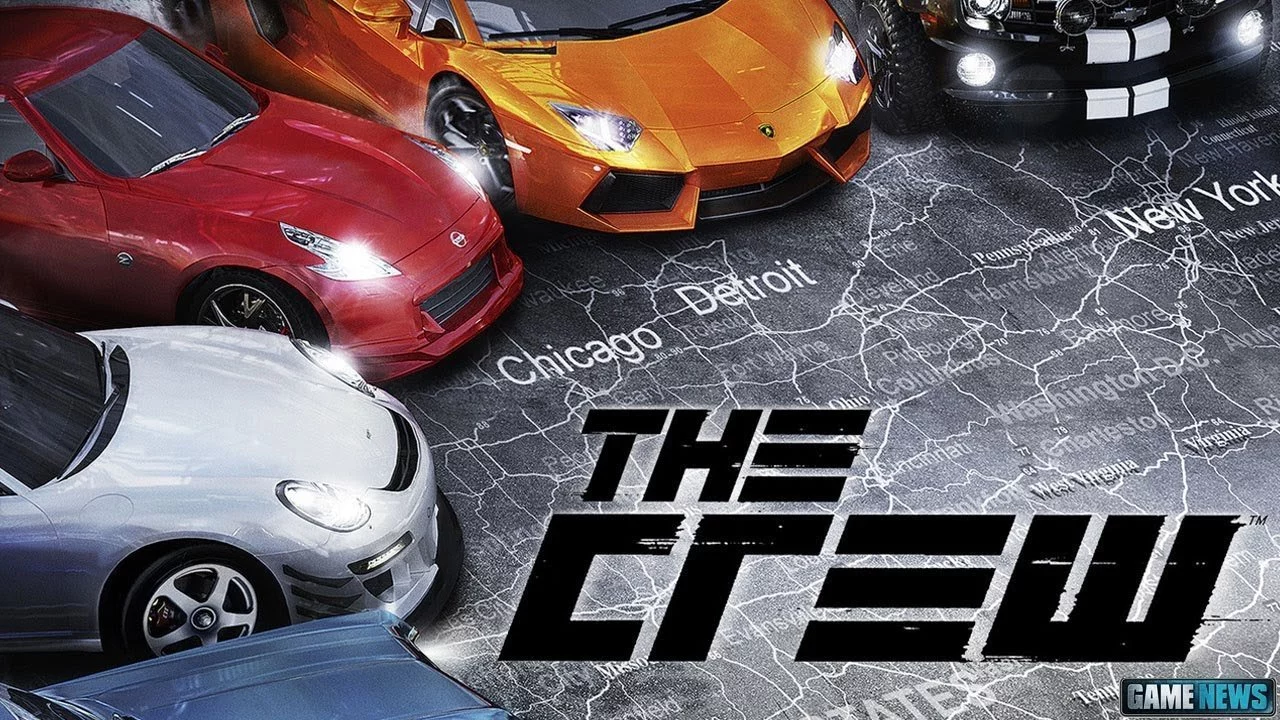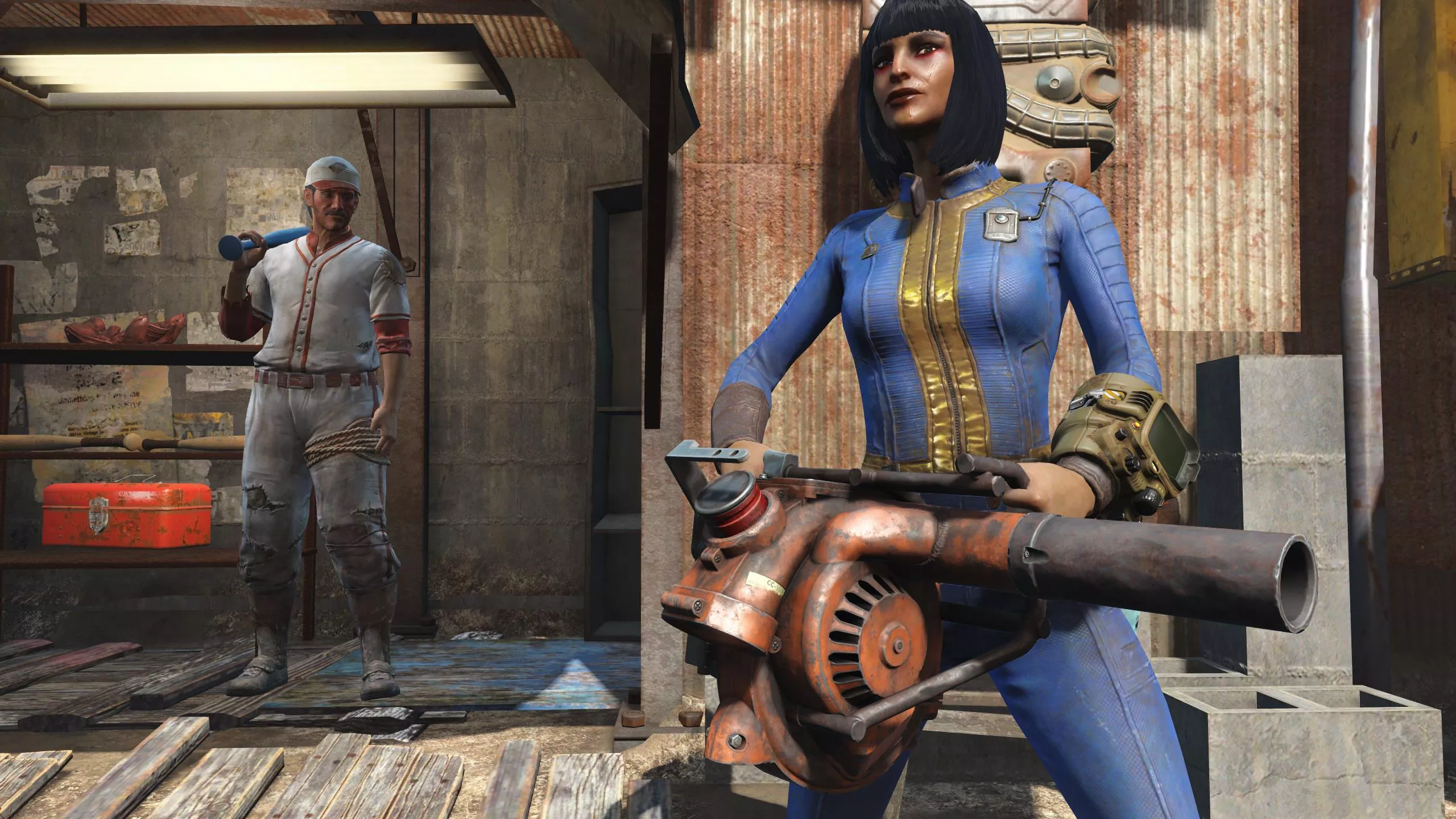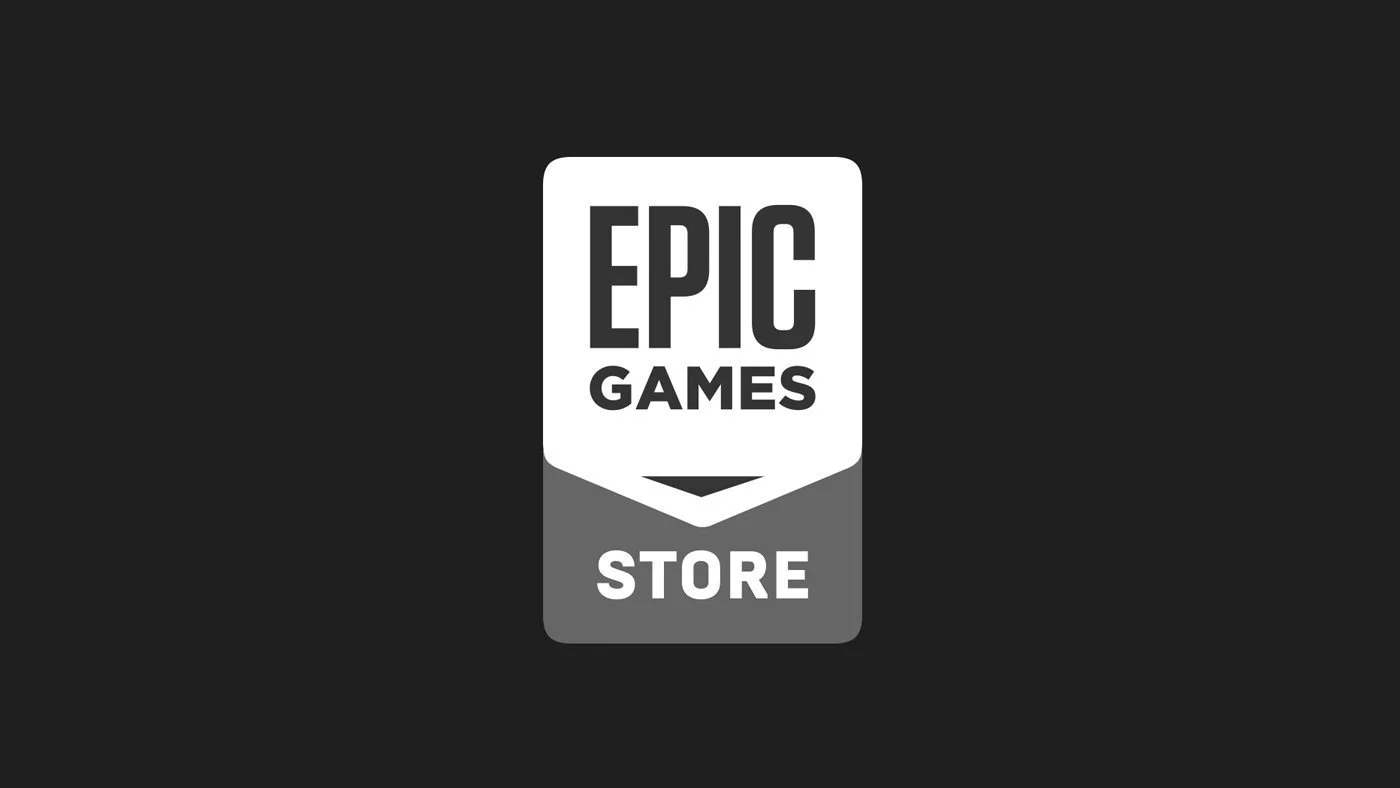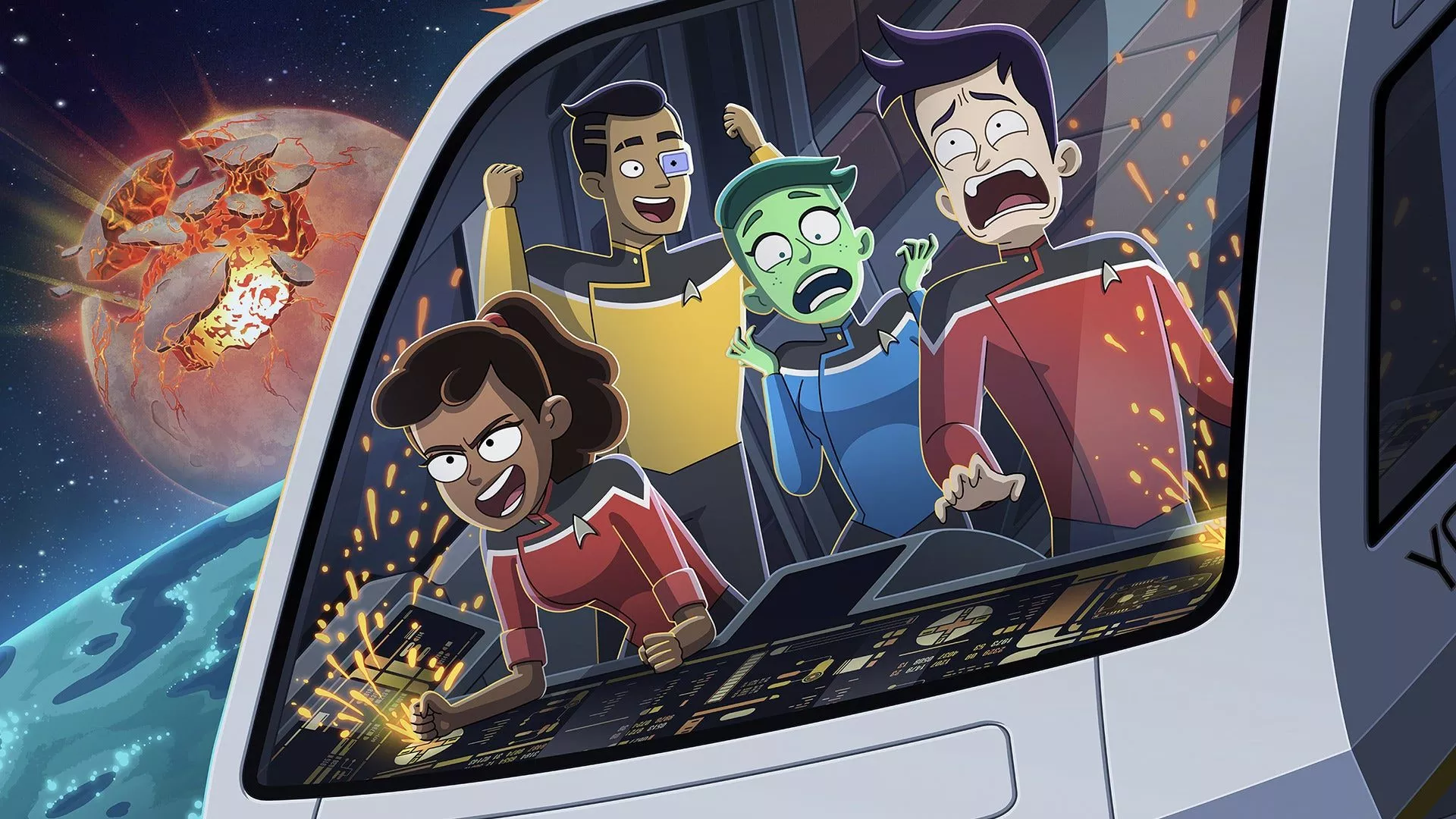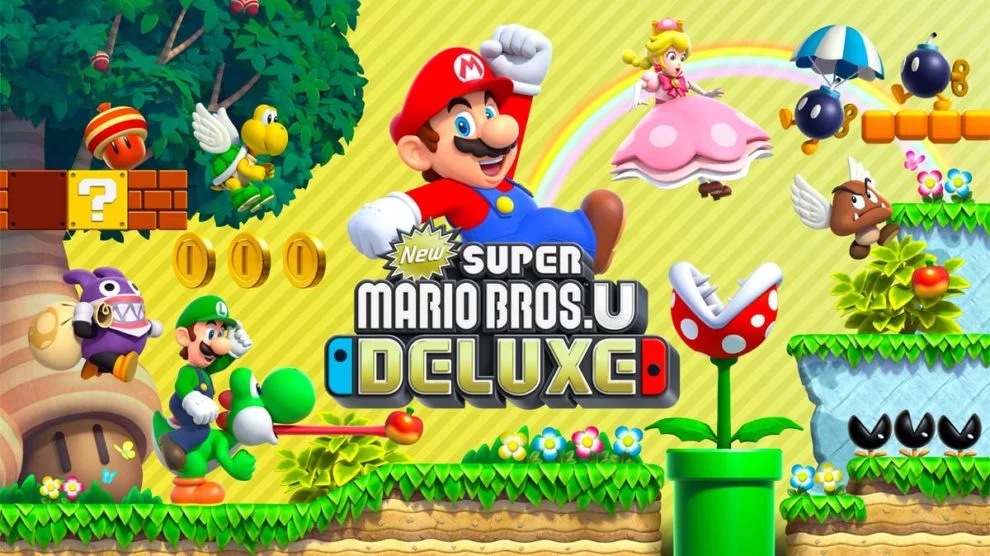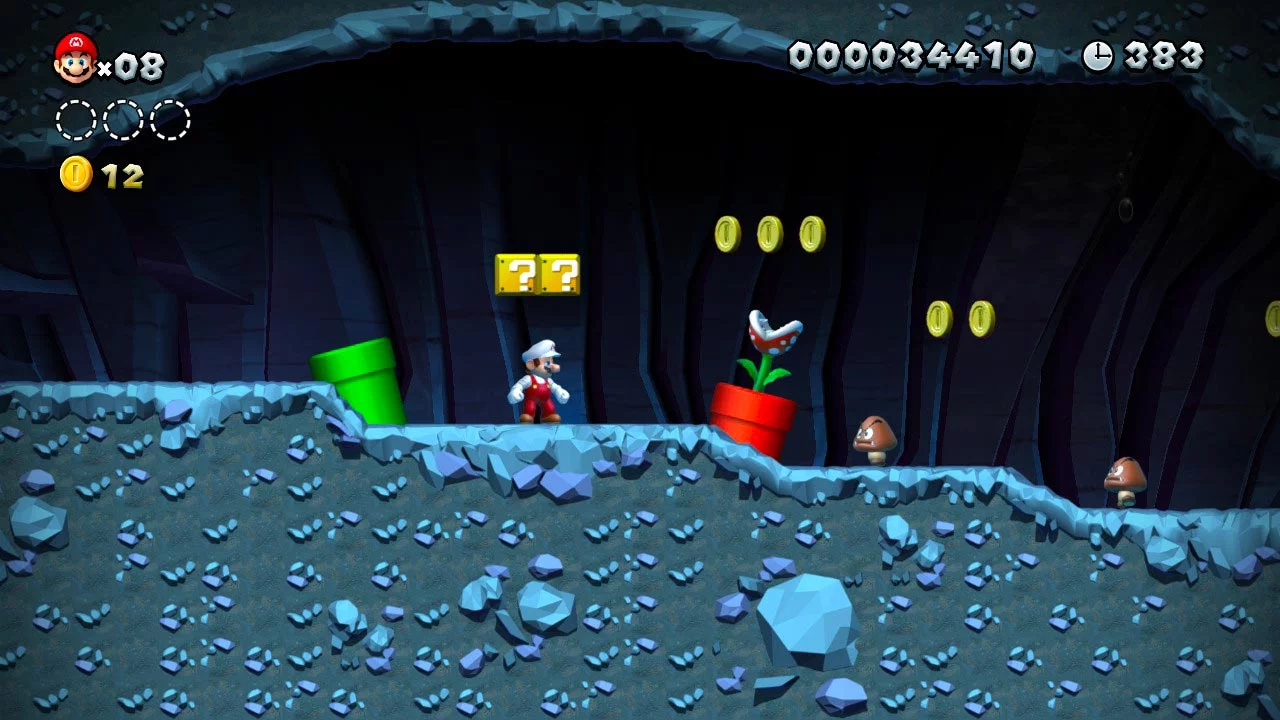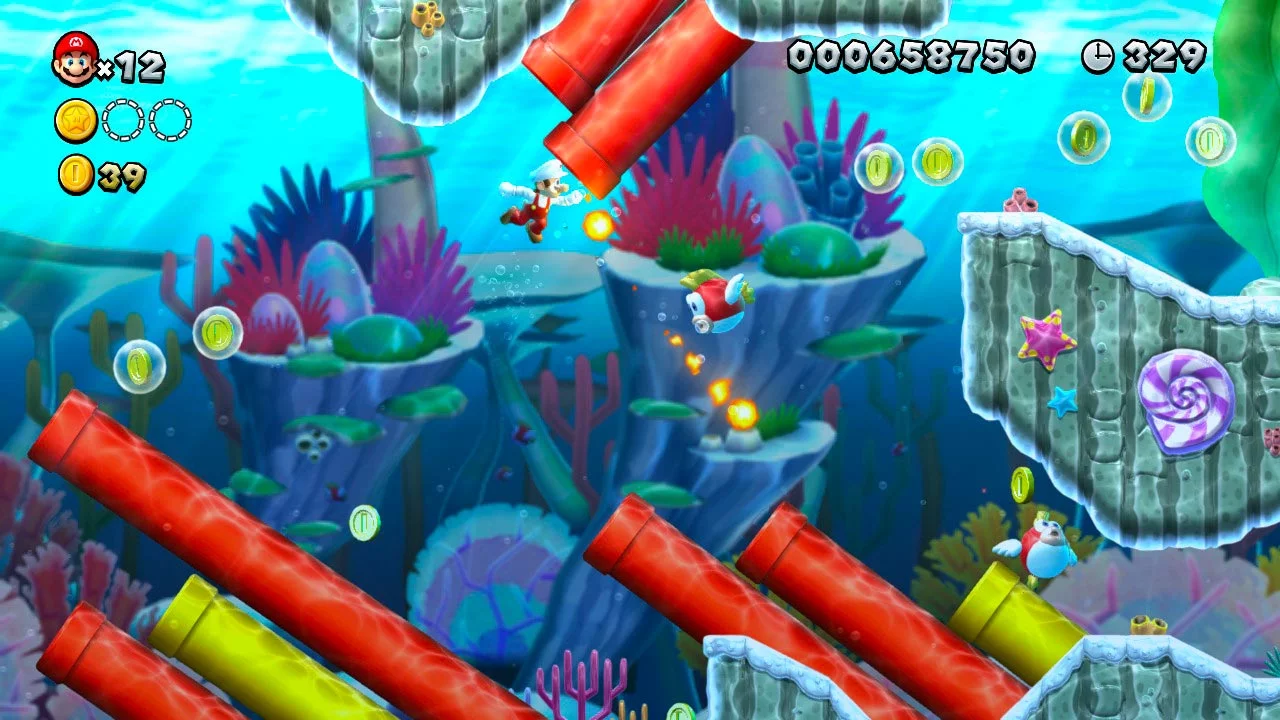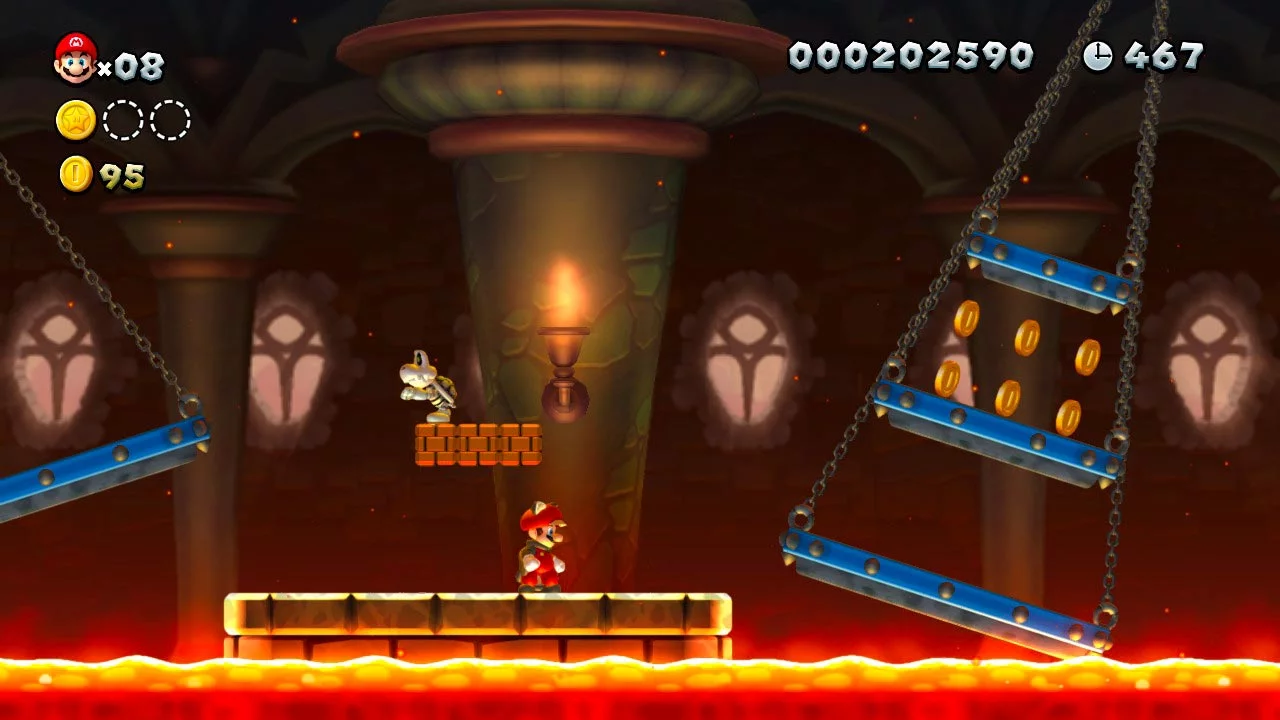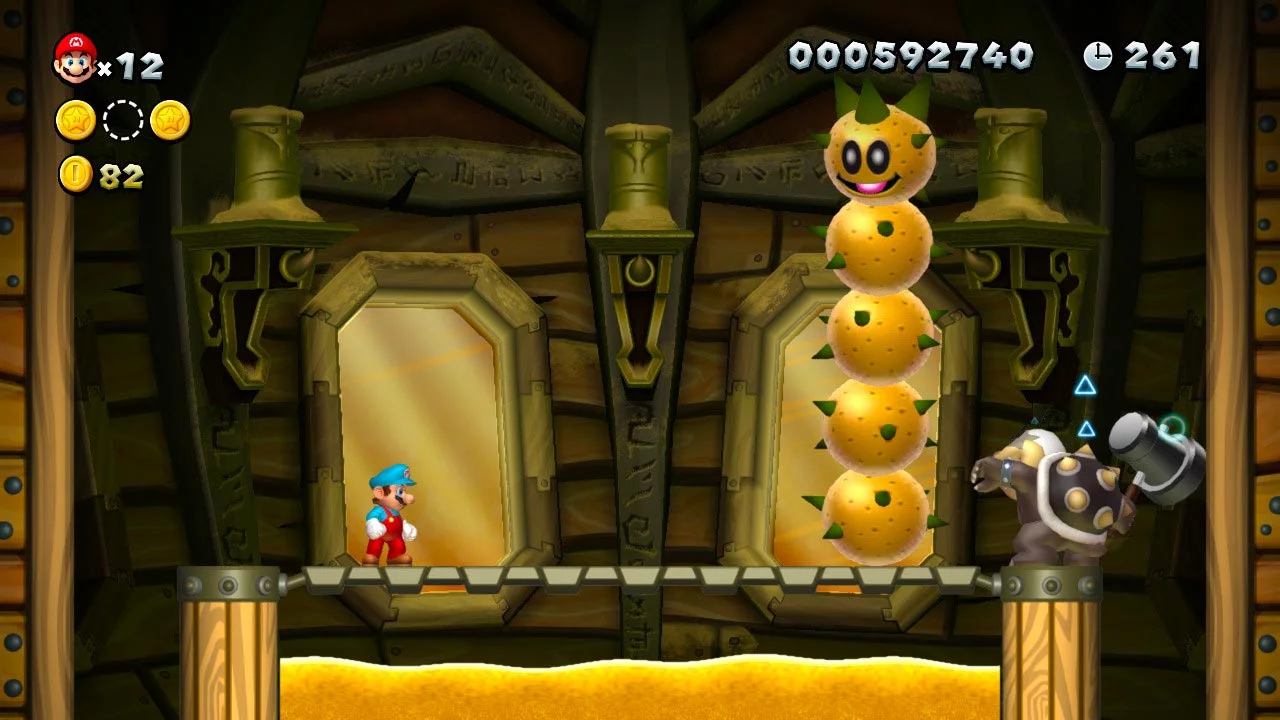As the Switch approaches its second birthday, Nintendo is keen to continue its success giving Wii U hits an encore. On the surface, New Super Mario Bros. U seems like an odd choice. After six years, aren’t we due for a new side-scrolling Mario, rather than a rerun? Nonetheless, it’s vintage Mario with a modern sheen, and the bite-sized level design makes it an ideal handheld game. At least they would if it were priced reasonably. At $80 (AUD), compared to as little as $9 for the same game on Wii U, it’s almost impossible justify the cost.
Remaster is far too generous a term for what Nintendo has provided a generation later. I’m even dubious to use the term enhanced port; there have been some minor tweaks, but it looks, and plays, almost exactly the same, and thus hasn’t been enhanced. The Deluxe moniker refers to the inclusion of the more challenging Super Luigi U levels, released on Wii U during the Year of Luigi.
New Super Mario Bros. U Deluxe returns to the open world sequential stages of the SNES icon Super Mario World. They aren’t numbered stages, and the branching paths deliver a sense that you’re actually exploring every corner of the Mushroom Kingdom. For that reason alone, it’s more attractive to veteran Mario players who crave variety, and if anything, even alienates the casual cohort who need to be told exactly where to go next. In contrast to the DS and Wii rebirth of side-scrolling Mario, the Wii U and now Switch instalment reintroduced the challenged. Once you blitz through the first few levels, it starts to get hard. It becomes quite challenging.
I like that.
The diverse range of levels are a joyful blend of speed-obsessed courses, precise platforming and testing puzzles. The map is riddled with surprises, from a little critter that keeps stealing all of Toad’s belongings to deadly penguins driving across your path and stumbling across hidden stages as you’re moving along. The overworld map brings Mario to life in a joyous way not experienced for four console generations.
Mario’s first foray into high definition was as marvellous as we all hoped it would be back in 2012, even if it doesn’t really push itself to be anything better than it need be. The simplistic artistic style of New Super Mario Bros. Wii was retained, with a considerable increase in sharpness that finally brought gaming’s most iconic mascot into last generation’s resolution. In 2019, the Switch version looks almost identical, except it can be played as a genuine handheld game and runs at a stable 1080p in TV Mode (Wii U used a dynamic resolution). I’m still impressed playing a game that looks this good in Handheld Mode, but am left a little underwhelmed by the dated TV Mode appearance, where it comes across as clearly last-gen and a little rough around the edges.
As a multiplayer game, Wiimotes have been exchanged for JoyCons. Character select has been updated on Switch, where four players choose from Mario, Luigi, Toad, Nabbit (a very easy mode without damage from enemies) and Toadette, who can power-up and transform into Peachette. The fifth player GamePad gimmick has been omitted. As with the Wii U version, it isn’t a good co-op game, despite being marketed as such. It’s nothing but frustrating with four players, unless everyone is of exactly the same mindset and skill level. It’s too chaotic and everything that makes the single-player game a timeless classic is lost with additional players. For mine, Mario is, and always will be, a single-player experience.
HD was the original hook, but now that’s common place, it’s the difficulty curve that allows New Super Mario Bros. U Deluxe to stand the test of time and remain the best in the series. Super Guide will still buzz around if you’re really struggling, and sends a computer-controlled Luigi through the stage to show you what to do. You’ll collect plenty of lives, but you’ll lose enough to make it feel like you need them. Each level is full of enemies to head-bop or blast with fire and the difficulty continues to seamlessly ramp up as you progress.
The opening stages are carefree and gently caress you once more into the world of Mario, but before you know it, you’ll be thinking twice and contending with enemies who can actually kill you — I don’t recall seeing that too often in other New Super Mario Bros. outings.
Coin Battle, Challenge and Boost Rush modes all return. Challenge mode tests your platforming abilities with a series of skill-based or time attack levels, while Coin Battle sees 2-4 players fight to earn the most coins. Boost Rush tasks you with completing the stages as fast as possible with a catch: each is auto-progressing slower than a grandmother driving through a school zone. You’ll need to keep collecting coins to speed it up. Retrospectively, now it feels like a twist on the auto-running Super Mario Run mobile game.
Gameplay remains largely untouched. The tweaks mostly relate to Toadette/Peachette and Nabbit as playable characters, but nothing really stands out. The most useful addition is an option to swap the run/jump buttons on the pause screen to suit your muscle memory; it’s fair to say when that’s getting a mention, little has changed.
New Super Mario Bros. U Deluxe’s biggest problem is its poor value proposition. This is not a remaster or a remake, it’s a port, and a six-year-old one at that. I’m glad Nintendo is giving its best Wii U games a second life on Switch, but I firmly believe these should be sold as budget titles for around $30-$40 (AUD). At double that, it’s an impossible sell, especially when EB Games was offloading the double-pack of New Super Mario Bros. U + Super Luigi U on Wii U for just $9 last month; this is the same game, played on Switch.
I’ve bought the king of ports (and to be fair, also remasters) Resident Evil 4 more times than I care to admit because subsequent purchases became cheaper each generation. Consumers can see they are being blatantly ripped off here, and sales will likely reflect that, especially in the long term. It’s baffling that Nintendo doesn’t get the new year off to a strong start with a budget priced, yet full quality, Mario game that would have been super appealing — it could have been another 10 million seller. As it stands, this is a great, but old game that is extremely overpriced.
As it did on Wii U in 2012, New Super Mario Bros. U Deluxe offers a genuine challenge and is the closest game in the New Super Mario series to the golden 16-bit era of Super Mario World with its open map and pitch-perfect difficulty curve. It’s arguably the best in what has been a great, but very safe, series and it doesn’t do anything to change that notion. The co-op is still frustrating, but its roots lie well within the single-player experience. Considering exactly the same game can be had on Wii U for a fraction of the cost, it’s massively overpriced on Switch and that’s a crying shame. It would have been a great game to return to, and for new players to experience as a handheld game on Switch, but at this price it’s hard to seriously contemplate.
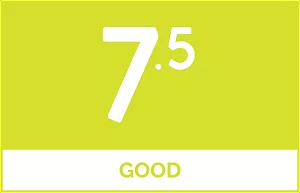 |
|
The good
|
The bad
|
New Super Mario Bros. U Deluxe was reviewed using a promotional code on Switch, as provided by Nintendo. Click here to learn more about Stevivor’s scoring scale.
This article may contain affiliate links, meaning we could earn a small commission if you click-through and make a purchase. Stevivor is an independent outlet and our journalism is in no way influenced by any advertiser or commercial initiative.


